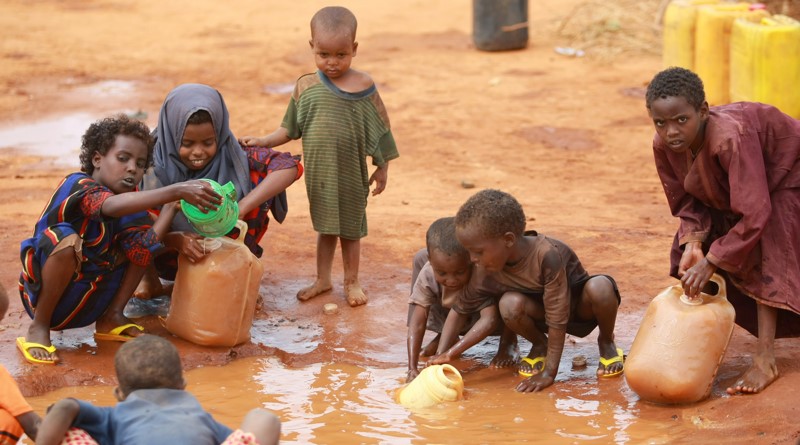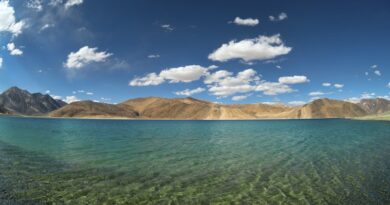Tensions over water exacerbating conflicts globally, warns UN report

Tensions over water are exacerbating conflicts worldwide, a new report launched by UNESCO on the occasion of the World Water Day on March 22, has warned, while arguing that to preserve global peace, international cooperation and transboundary agreements need to be encouraged.
While approximately 40 per cent of the world’s population lives in transboundary river and lake basins, only a fifth of countries have cross border agreements to jointly manage these shared resources equitably. Many transboundary basins are already located in areas marked by current or past interstate tensions, noted the 2024 World Water Development Report Water for Prosperity and Peace.
In the Arab region, seven countries were in conflict in 2021 – some dating back many years – which has had wide-ranging implications for water supply, infrastructure, and potential cooperation on water-related issues.
Africa remains especially vulnerable to interstate tensions relating to water: 19 out of 22 states studied suffer from water scarcity, and two-thirds of the continent’s freshwater resources are transboundary. Of the 106 transboundary aquifers mapped in Africa, interstate cooperation has only been formalized in seven.
In this context, cooperation on transboundary water management appears to be a powerful lever for maintaining peace. By creating conditions for regular dialogue between all parties and instituting the necessary legal frameworks, this cooperation has the potential to resolve most disputes relating to water, and therefore prevent the emergence or exacerbation of wider-ranging conflicts.
The Framework Agreement on the Sava River Basin (FASRB), signed in 2002 by Bosnia and Herzegovina, Croatia, Serbia and Slovenia, was the first multilateral, development-oriented agreement in South-East Europe. It has successfully laid the groundwork for sustainable water management. Two decades after its adoption, it has become a key driver of stability in the region, and now serves as an example of best practice for other regions of the world, said the report, prepared by UNESCO on behalf of UN-Water.
“As water stress increases, so do the risks of local or regional conflict. UNESCO’s message is clear: if we want to preserve peace, we must act swiftly not only to safeguard water resources but also to enhance regional and global cooperation in this area”, said UNESCO Director-General Audrey Azoulay.
According to the report, today 2.2 billion people still live without access to safely managed drinking water and 3.5 billion lack access to safely managed sanitation. The UN goal of ensuring this access for all by 2030 is therefore far from being attained, and there is reason to fear that these inequalities may continue to rise.
Between 2002 and 2021 droughts affected more than 1.4 billion people. As of 2022, roughly half of the world’s population experienced severe water scarcity for at least part of the year, while one quarter faced ‘extremely high’ levels of water stress, using over 80 per cent of their annual renewable freshwater supply. Climate change is projected to increase the frequency and severity of these phenomena, with acute risks for social stability.
The report looks at water’s capacity to unite people and serve as a tool for peace, sustainable development, climate action and regional integration. It links peace and prosperity. Water infrastructure and its management systems promote growth and prosperity by securing a reliable water supply for key economic sectors such as agriculture, energy, industry, and a broad range of businesses and services that support livelihoods worldwide.
“Water, when managed sustainably and equitably, can be a source of peace and prosperity. It is also the literal lifeblood of agriculture, the major socio-economic driver for billions of people”, said International Fund for Agricultural Development (IFAD) President and UN-Water Chair Alvaro Lario.
Girls and women are the first victims of a lack of water, the report highlighted.
The first impact is the deterioration of living conditions, leading to heightened food insecurity and health risks. Water scarcity also has consequences on social development, particularly for girls and women. In many rural areas, they are the primary water collectors, spending up to several hours a day on this task. Reduced access to water supply exacerbates this burden, which undermines women’s education, economic participation and safety. This may also contribute to the higher secondary school dropout rate among girls compared to boys.
The lack of water security has also been identified as one of the drivers of migration. This displacement can, in turn, contribute to water insecurity by placing added strain on water systems and resources in settlement locations, thereby fuelling social tensions. A study conducted in Somalia indicates a 200 per cent increase in gender-based violence against a group of displaced people.
Cooperation over water resources has generated positive and peaceful outcomes, ranging from participatory, community-led initiatives that have relieved local tensions, to dispute settlement and peace-building in post-conflict settings and transboundary watersheds. However, inequalities in the allocation of water resources, in access to water supply and sanitation services, and in the distribution of social, economic and environmental benefits can be counter-productive to peace and social stability.
The impacts of climate change, geopolitical unrest, pandemics, mass migration, hyperinflation and other crises can exacerbate water access inequalities. In nearly all cases, the poorest and most vulnerable groups are those that suffer the greatest risks to their well-being and livelihoods.
Water management must therefore be aware of potential socio-economic realities emerging from several factors, ranging from global climatic and geopolitical changes to local social tensions, economic adversity and environmental degradation, their implications for water and how water considerations might contribute to shaping those, the report added.


